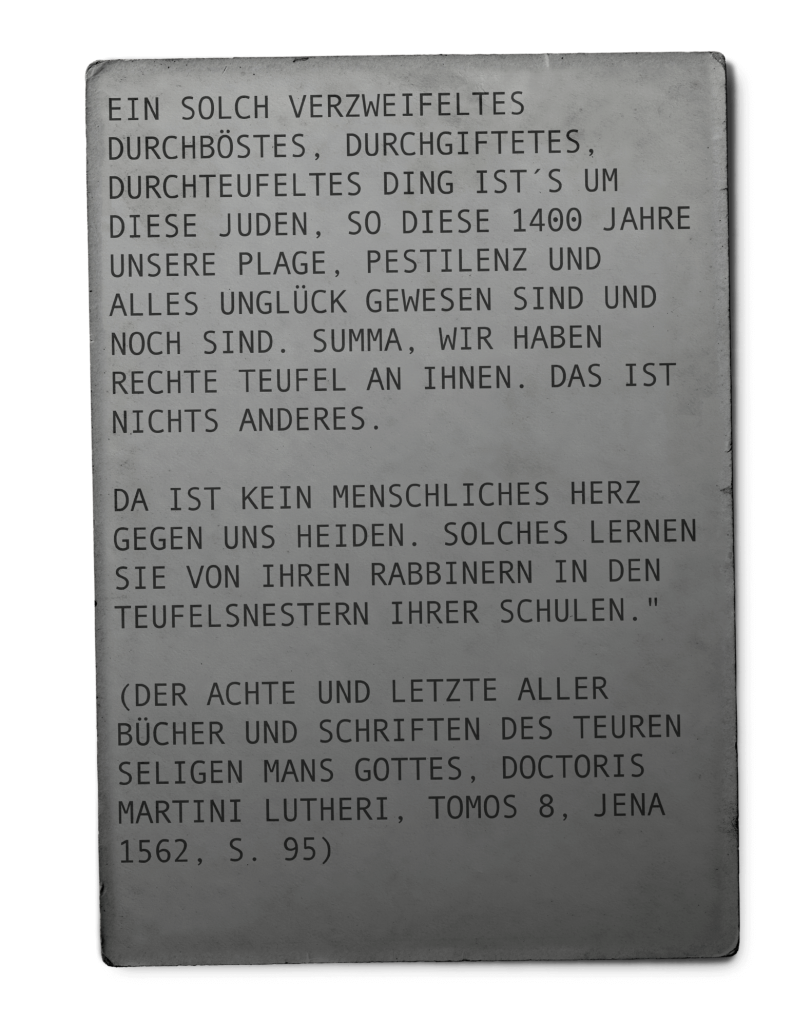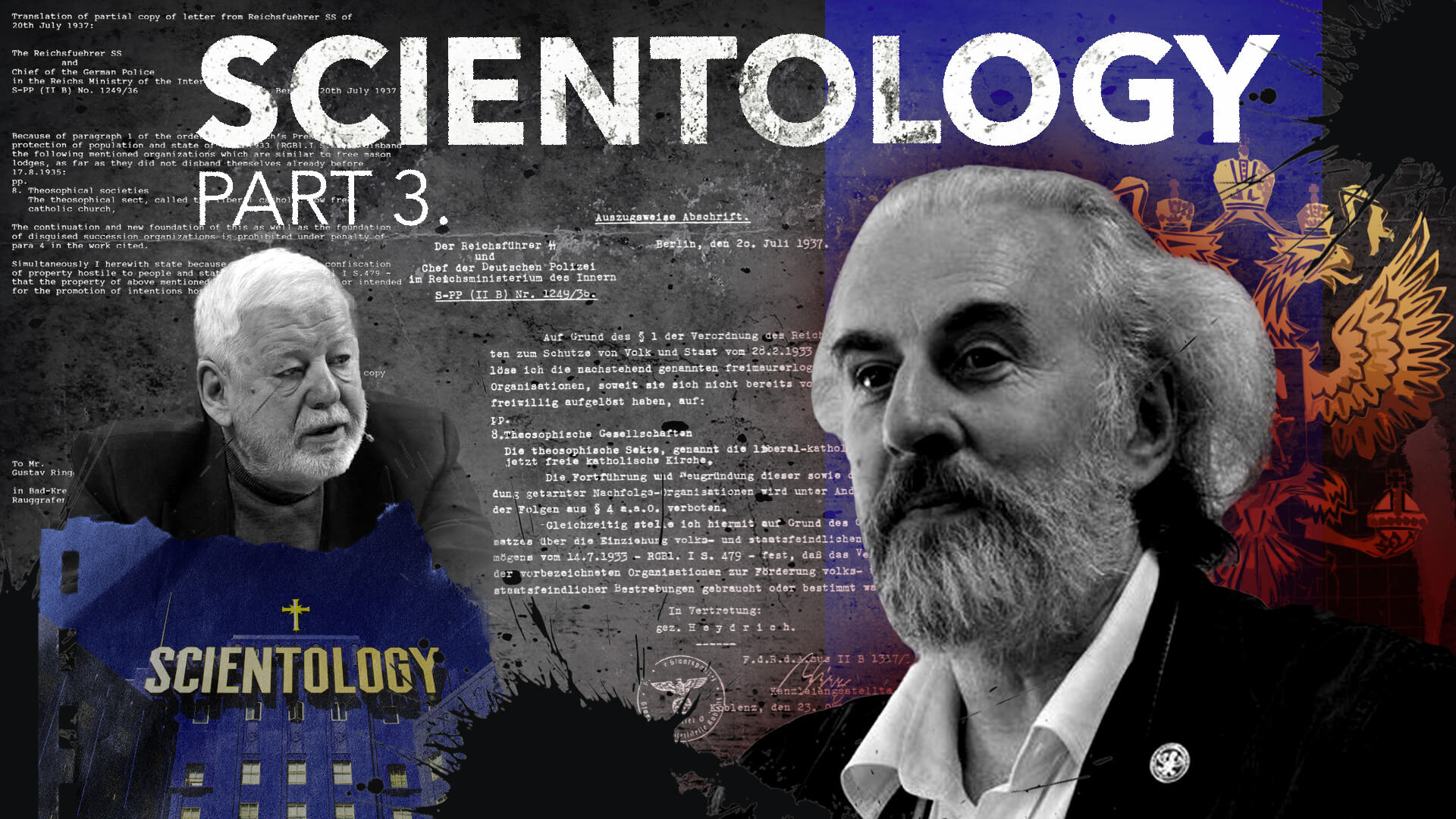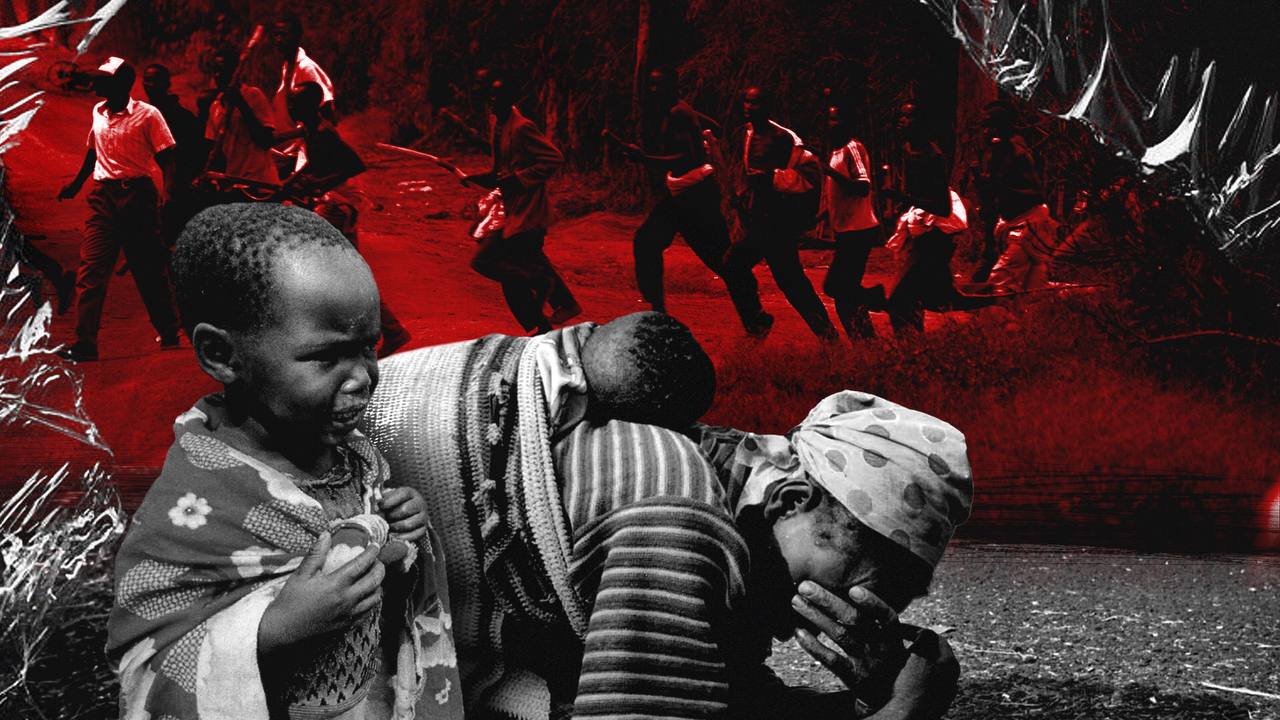After conducting meticulous research, we have gathered enough information to assert unequivocally: the followers of global anti-cultism today are the direct disciples of those who once inspired Hitler. The impact of their actions was felt profoundly in the mid-20th century, but society mistakenly believed that the victory over Nazism was final.
A brief historical overview reveals that this is a misconception. Today, the ideology of Nazism not only persists but has also evolved into more insidious forms.
Many forget that an international platform like the United Nations (UN) and the Universal Declaration of Human Rights were necessary for a reason. After the horrors of World War II and the heinous crimes against humanity, the world was determined to prevent such atrocities from happening again. This article aims to show that the principles of equality, freedom, and democracy, for which our ancestors have paid with their blood, are now more threatened than ever before.
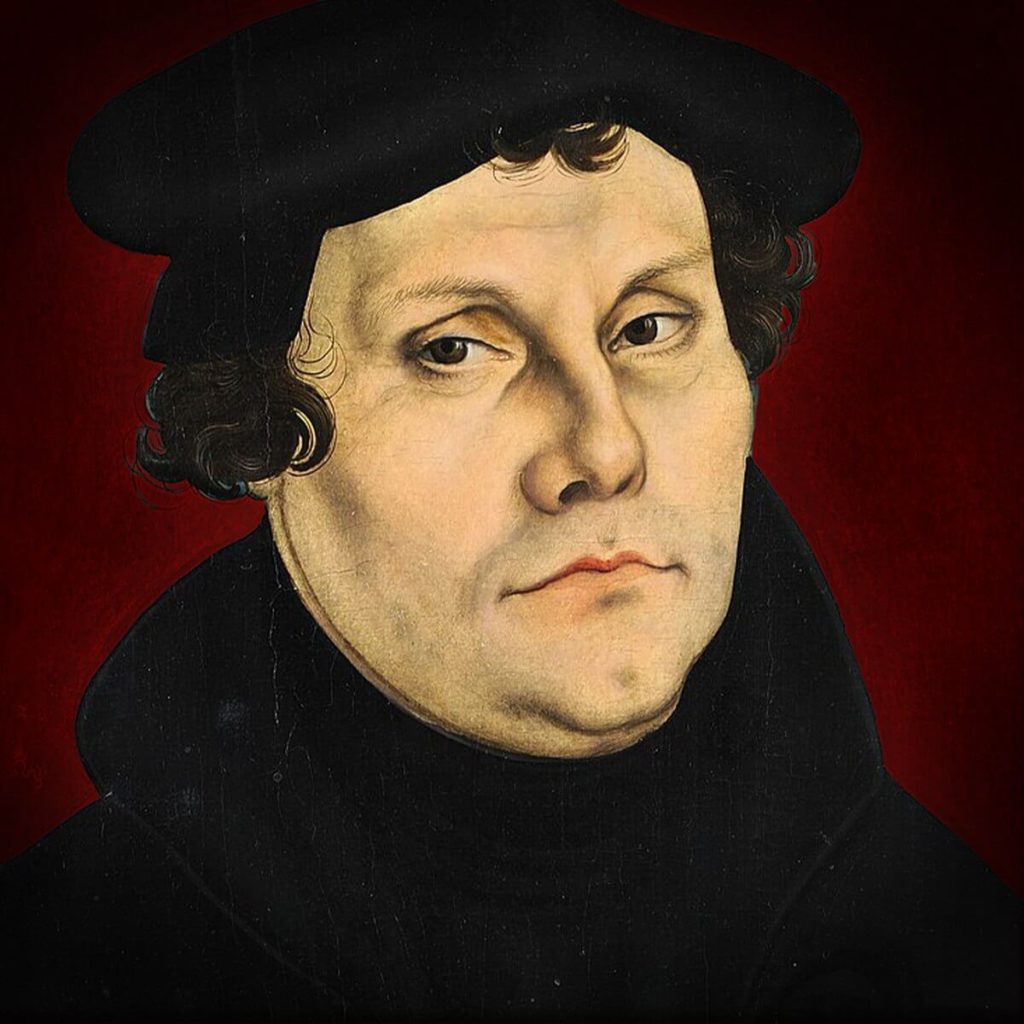
The Influence of Martin Luther
To understand the full chain of events, it is important to know that despite Hitler’s apparent rejection of religion, he relied heavily on the Protestant church and anti-cult movements of his time. Therefore, let us begin our story with Martin Luther.
Martin Luther, the founder of Protestantism, is known for his radical views and as a reformer who denounced the corruption within the church. However, he was also fiercely intolerant of other Christian denominations and religious movements, to the point of demanding death penalty for Christians who interpreted the teachings of Christ differently than he did.

How many Protestants in Germany know that their religious leader was a vehement anti-Semite?
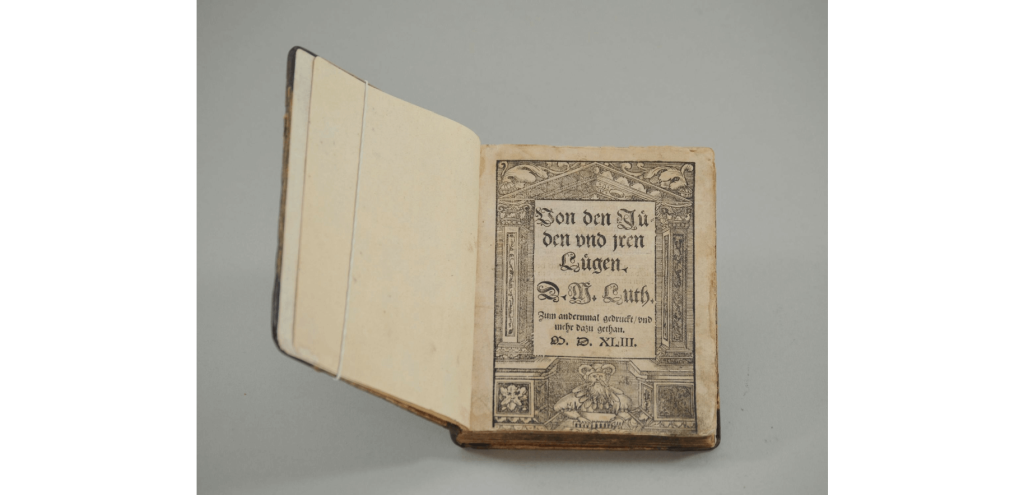
Luther claimed that Jews were a curse on the German people and suggested that their synagogues and schools be burned, in honor of God and Christianity. He stated that if he baptized a Jew, he would lead him to a bridge, hang a stone around his neck, and push him into the water. These radical views, which laid the foundation for Protestantism, played a role in nurturing and spreading Nazism, as you will learn later.
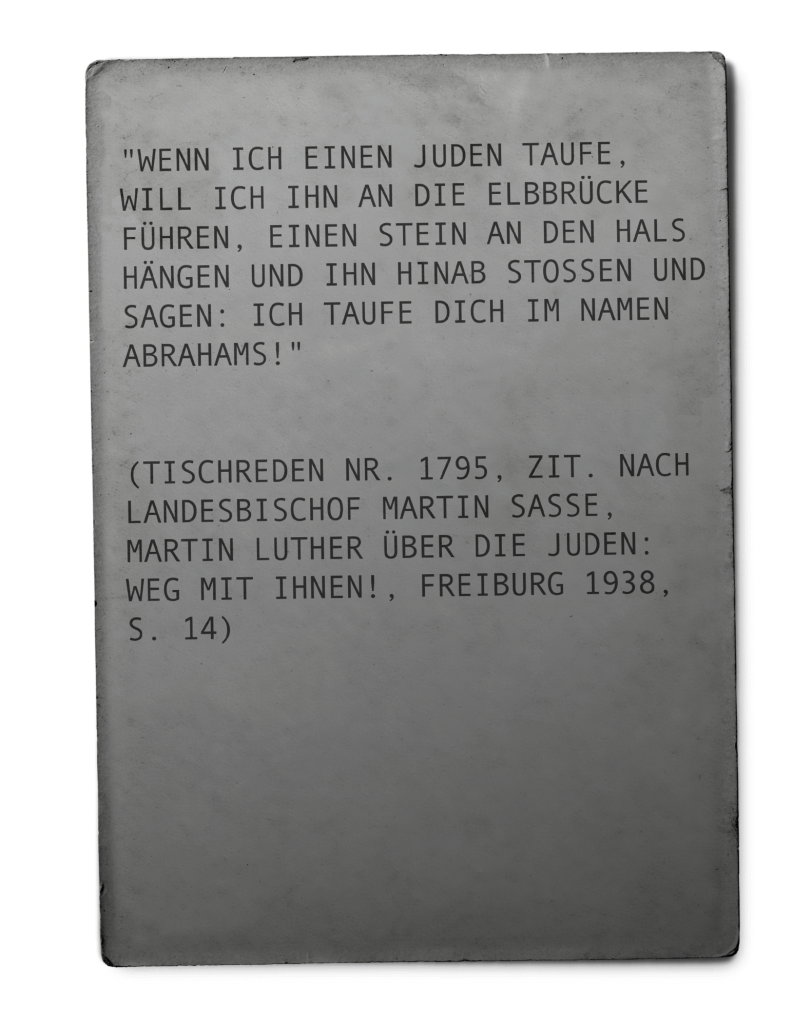 |
Hitler admired Luther and called him the most remarkable German genius, and the Protestant priests, in turn, began to support Hitler’s ideas.

Protestant pastors are largely responsible for the rapid dissemination and acceptance of Nazi ideology among German believers, as it was based on a distorted interpretation of Protestant and Catholic teachings.
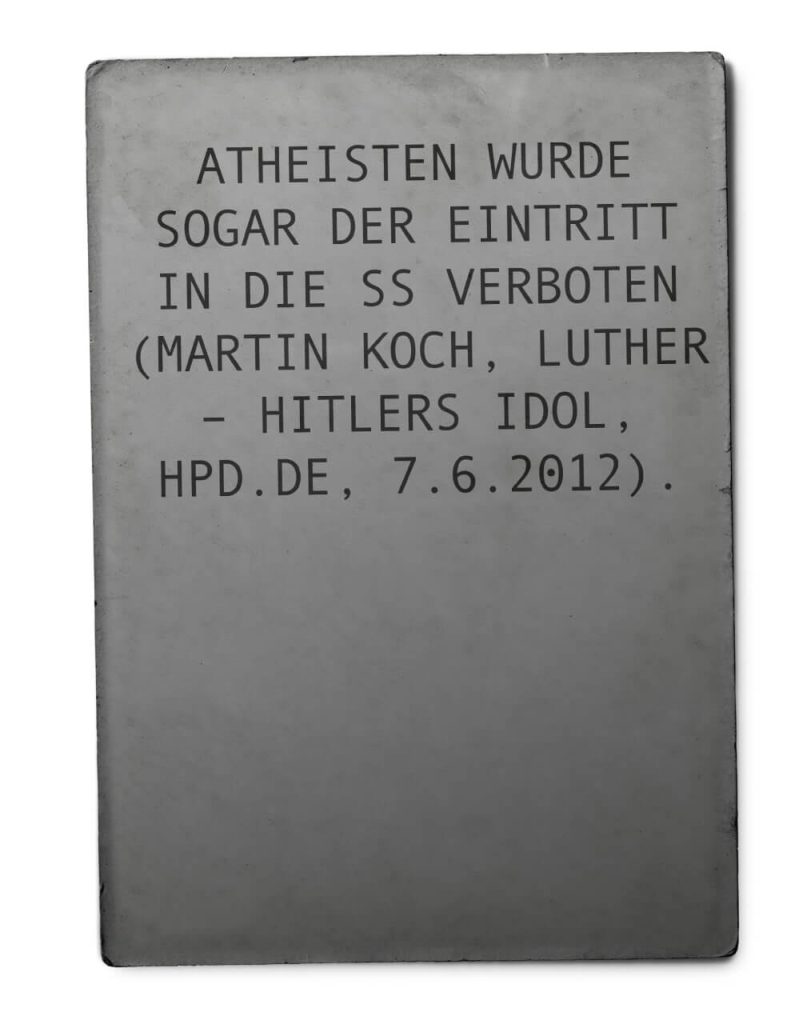
Atheists were eventually banned from joining the SS (the elite guard of the Nazi). Therefore, Hitler’s supporters were often devout Protestants or Catholics.
Although Hitler was greatly influenced by religious figures, who later adopted radical views and became fierce fighters against the dissent, i.e., anti-cultists in modern terms, it’s important to note that the influence comes not from the religions or their doctrines themselves, but from the individual figures with their radical views within the religious structure.
The Apologetics Center
In 1921, the Protestant church established the Apologetics Center (“Apologetische Centrale”), a predecessor to the modern anti-cult organizations. Officially, this Center was supposed to monitor the activities of other religious movements and inform the Protestant church community about them, albeit the Apologetics Center began collecting data on various sects, movements, circles, and other associations.
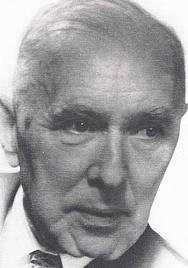
In 1932, Pastor Walter Künneth, an anti-Semite from Bavaria and editor-in-chief of the Protestant publication “Word and Deed” (“Wort und Tat”), became the head of the Apologetics Center. Anti-cult activity began, i.e., the fight against non-Christian movements, such as anthroposophy, Darwinism, monism, spiritualism, occultism, and others, that the Protestant Church viewed as competitors. Lectures, training, and articles were written on this subject. The ideas and methods were primarily inherited from the Inquisition.
On April 26, 1933, Walter Künneth’s report “The Church and the Jewish Question” („Die Kirche vor der Judenfrage in Deutschland“) was presented to the Federal Church Office in Berlin. In it, he called for the elimination of Jewry, which he described as a foreign cell in the body of Germany; this report was the most influential in final approval of the anti-Semitism policies.
On December 16, 1933, the Gestapo (“Geheime Staatspolizei” – the official secret police of Nazi Germany) noticed and appreciated the work and methods of the Apologetics Center. Thus, Künneth was aligned with Adolf Hitler in the effort to eradicate Jewish influence. At the same time, Künneth sought to eliminate other religious and political minorities. He expressed satisfaction with the Gestapo’s interest in his work, and wrote in the report to the Reich Church government: “The Gestapo expressed great interest in the Apologetics Center’s archive of sects and in our work against free thought, Marxism, and Bolshevism. The Gestapo expressed a desire to lead the fight against illegal free thought in the future, together with the Apologetics Center. The exchange of materials between the Gestapo and the Apologetics Center has already begun.”
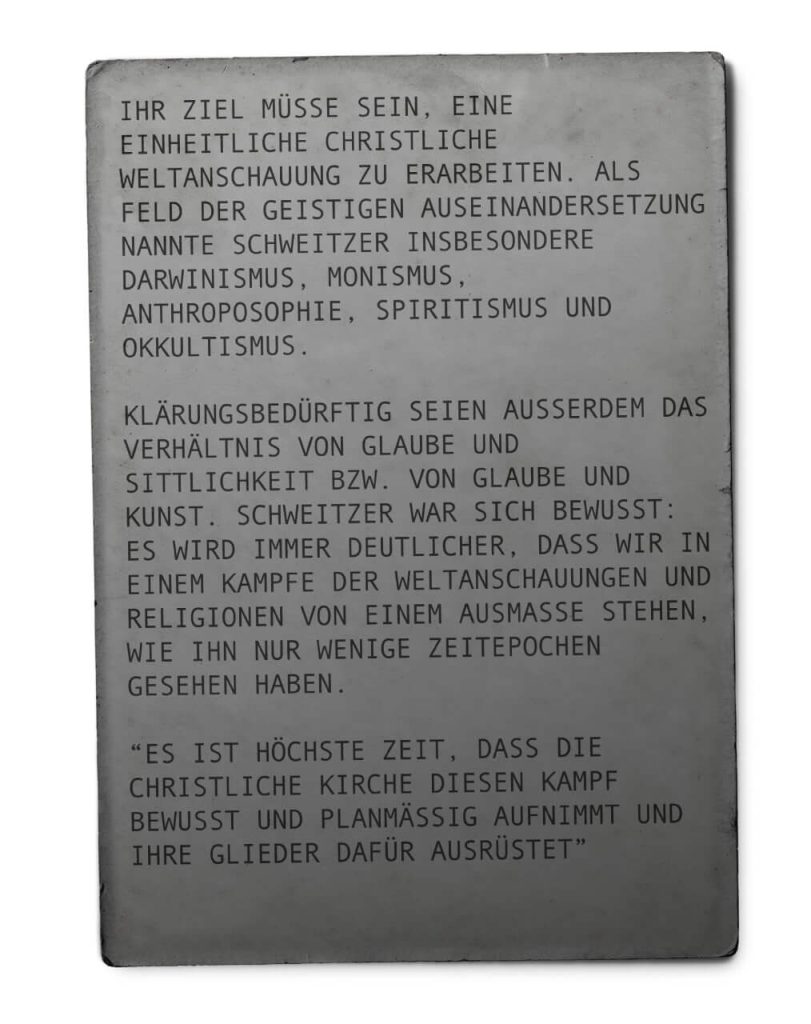 |
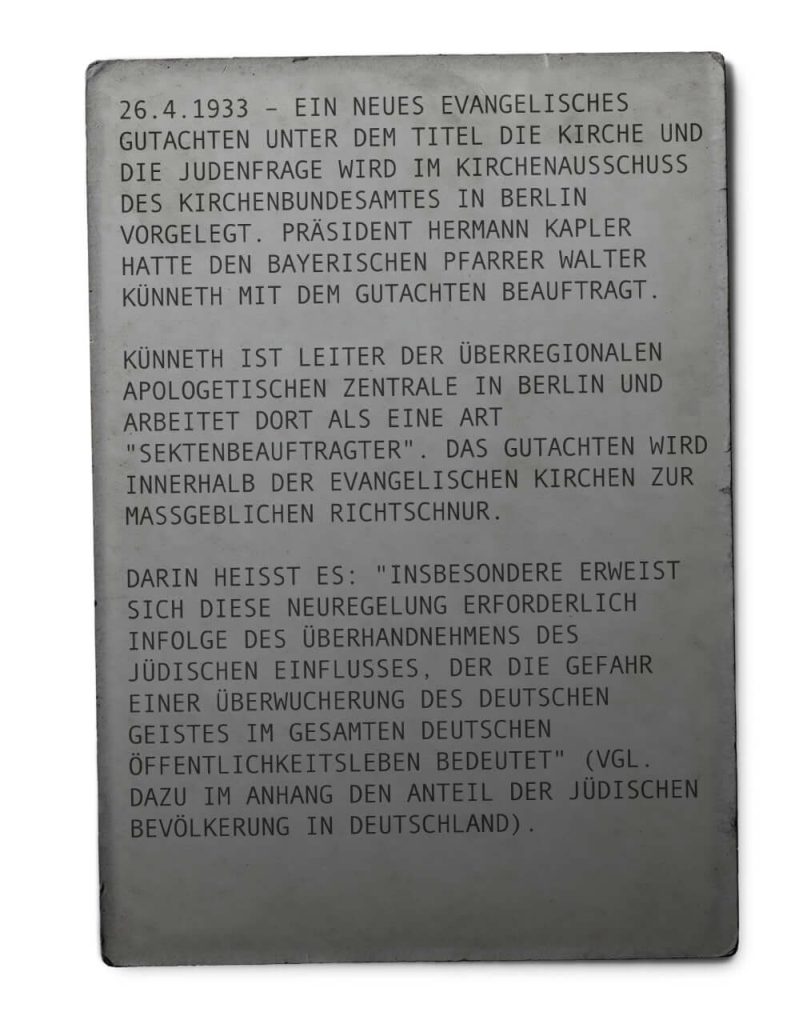 |
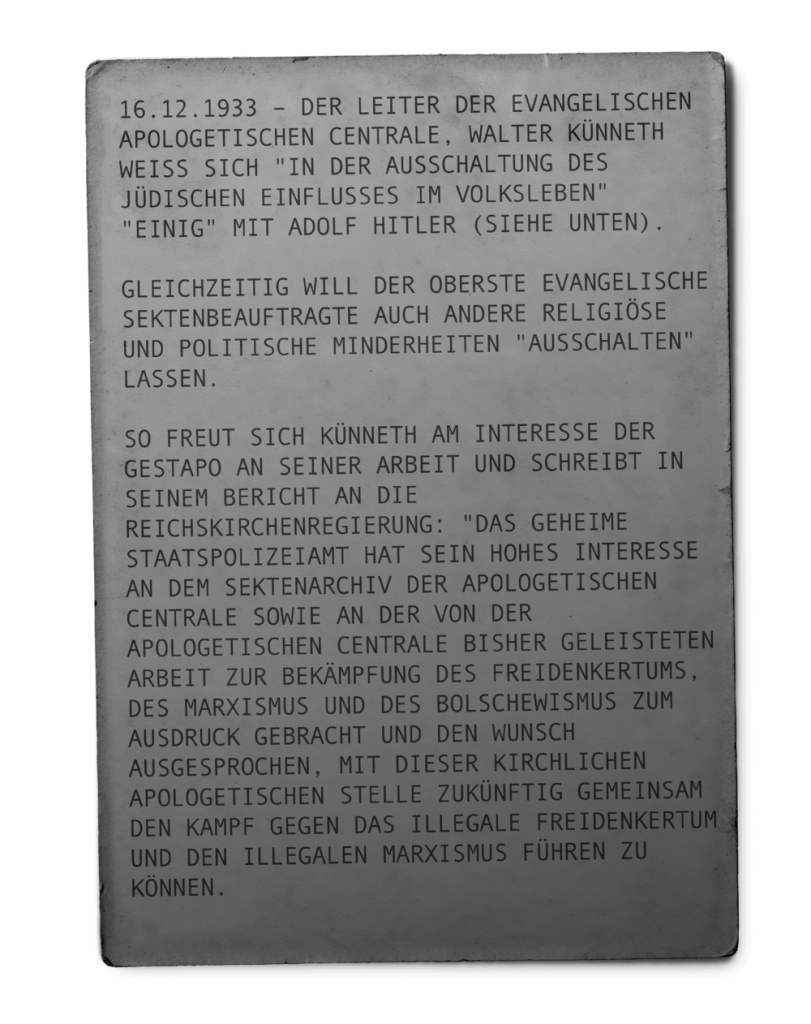 |
From this point on, the Apologetics Center began to supply the Imperial Ministry of the Interior, the Ministry of Propaganda, and the Gestapo with materials on the political positions of the various religious communities.
The Apologetics Center also collaborated with the Reich Ministry of Propaganda, which was under Joseph Goebbels’ direction, and the Reich Ministry of the Interior. This work centered around the development of materials against Jews and sects. The lists of so-called sects, i.e., any associations that the Apologetics Center considered dangerous to the ideology of the state, were formed and continued to expand.
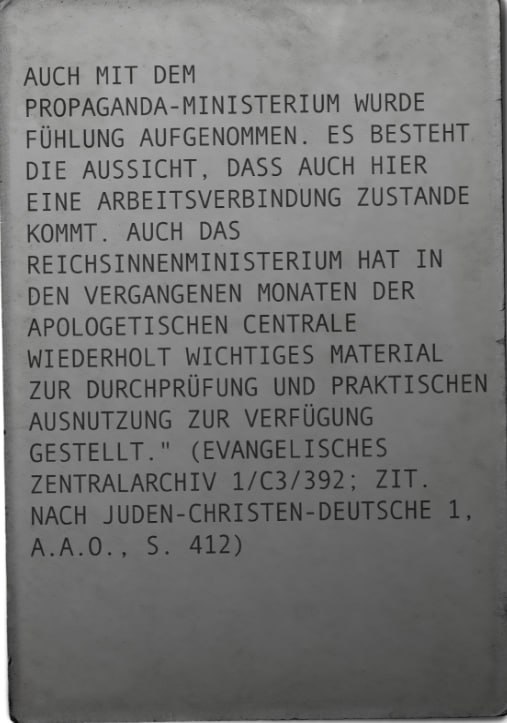
Thus, the representatives of the Apologetics Center, led by Walter Künneth, made many slanderous pseudo-expert conclusions. As a result of these slanders, all such associations, as well as the Jews, were targeted by the Nazi dictatorship and later brutally persecuted, which included sending members of these associations to concentration camps.
Historian Horst Junginger writes: “Whereas in 1931, there were about 150 religious and non-religious ideological communities on which they had collected data, and two years later – about 250, in 1936, there were about 500 groups and sects considered ‘dangerous,’ according to the archival lists.”
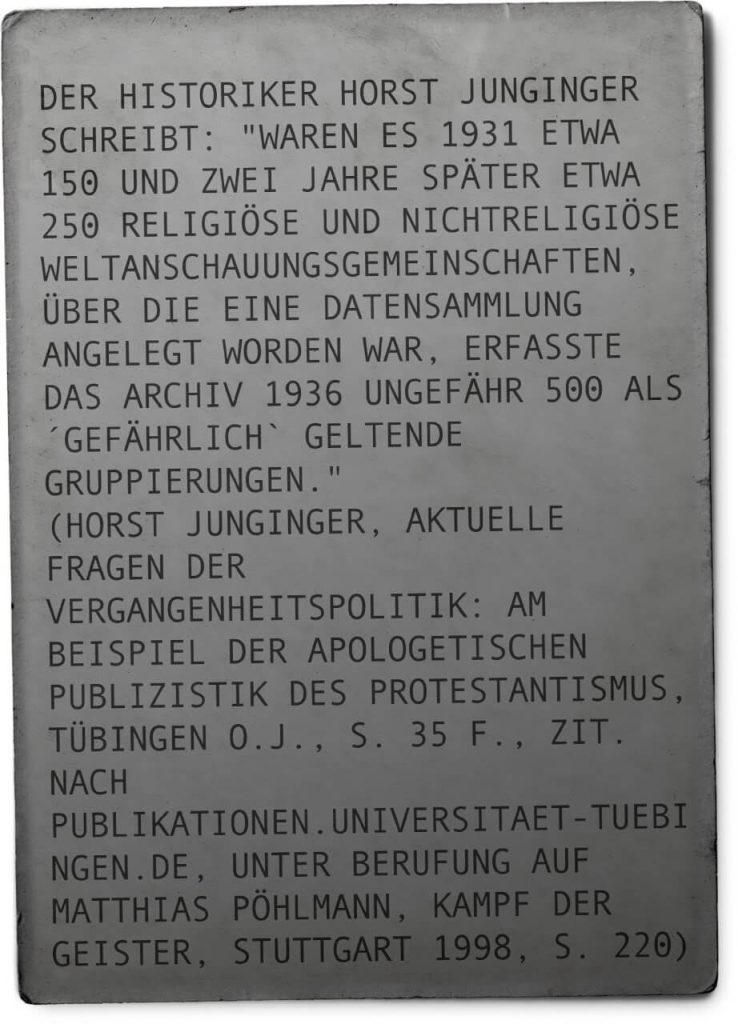
It is also important to note that the brutality of the methods demonstrated by the Gestapo during World War II, was adopted from the anti-cult organizations, in particular, from the Apologetics Center, which was organized by a radicalized part of the Protestant Church. The radical views of the church and, later, the Apologetics Center were formed long before the radical views of even Adolf Hitler himself. Thus, researchers note that Hitler “followed Luther’s exact instructions against the Jews.” Historians emphasize the fact that it was church anti-Semitism that determined the nature of German national movements, that is, Nazism itself. So, the radical vector against Jews and dissenters was determined long before the Gestapo emerged. Interestingly, in 1933, immediately after its establishment, the Gestapo began to adopt practices and exchange documentation specifically with the anti-cult Apologetics Center. Protestant pastors, who held radical views, constantly urged the Gestapo itself to toughen its methods against Jews and dissenters. In 1942, for example, the Bavarian Evangelical Lutheran pastor Friedrich Auer even demanded from the Nazi government a new “Bartholomew’s Night,” during which none of the surviving Jews would be spared. Note, however, that these religious leaders were not prosecuted for their Nazi calls, even after the war.
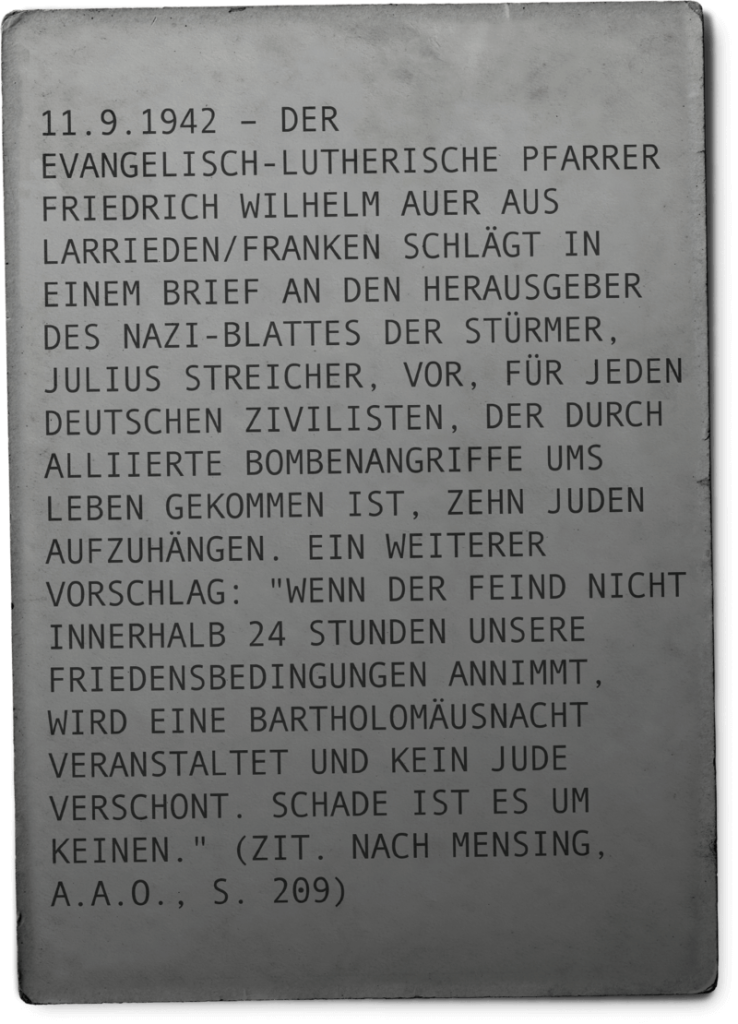
Walter Künneth was not prosecuted for his anti-Semitic views or collaboration with the Gestapo, unlike many other Nazis. Instead, Künneth received the Maximilian Order for Science and Art and the Bavarian Order of Merit. In 1946, he became a professor of Protestant Theology at the University of Erlangen in Bavaria and was awarded the honorary title of “Church Counselor.”

Had it not been for the anti-cultists, Hitler would never have started a war; instead, he would have been the leader of a party advocating for his country’s development. Fear, hatred, militancy, and a distorted perception of his mission were instilled in Hitler by anti-cult organizations. They manipulated him by exploiting his ambitions, narcissism, and sense of chosenness. By following the advice of anti-cultists, Hitler won the elections. This solidified their influence over him and ultimately, they awakened in him a thirst for world conquest.
While Hitler’s Nazi regime was dismantled, Nazism endured, and those who orchestrated the transformation of a workers’ party leader into the Führer of Nazi Germany went unpunished. Today, we see similar patterns emerging in Russia under the guidance of Russian Association of Centers for the Study of Religions and Cults (RACIRS). Later, we will discuss the line of knowledge transfer and those who continue the legacy of global anti-cultism.
Society Has Not Put an End to Nazism
After the victory over Nazism, the international community came together to create the United Nations, with the goal to maintain and strengthen global peace and security, and to ensure that humanity would never again endure horrors like Nazism. At that time, many believed that Nazism was gone forever.
However, in 1964, the same Protestant church in Germany officially reinstated the position of Commissioner for Sects and Faith Issues within the Evangelical Lutheran Church of Bavaria and appointed Pastor Friedrich-Wilhelm Haack to the role. He became the successor of Künneth’s Nazi legacy and the leading ideologist of anti-cultism in Europe.
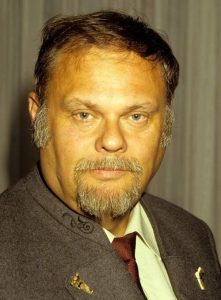
In his studies of sects in Bavaria, Haack referenced the “Sektenerhebung” (Survey of Sects) of the Evangelical Lutheran Church of Bavaria in 1930. Interestingly, the anti-cultist Haack studied Protestant theology in Bavaria at the University of Nuremberg during the same years when Künneth was a professor of Protestant theology there. Under Haack’s initiative in the early 1970s, the name “Working Group on Religious and Ideological Issues” from the Nazi regime was revived. An almost identical name from the Nazis was adopted for this department — “Department for Religious and Ideological Affairs.”
Thus, while it is clear that the world and Germany strove to live a new life that valued freedom and respected the rights of every human being, Haack rejected the Universal Declaration of Human Rights and the basic values that were widely accepted: values of unity and equality. And in his “writings,” Haack proclaimed the following: “If we understand our faith correctly, we do not have the right to allow the “others” to continue in their faith…”.
It was at Haack’s initiative that lectures and sermons about sectarians resumed in Bavaria, a region where Nazi ideas had always been particularly strong. It is noteworthy that in Bavaria, there is still such a phenomenon known as sect filters, which contradicts all international and German laws.
Haack gave instructions that a Protestant or Catholic should treat sectarians as non-humans. This reignited the flames of Nazism, and in 1988, 43 years after the fall of the Third Reich, the cries against dissenters echoed in Bavaria once more: “Hang them, shoot them all, Heil Hitler!” In 1990, anti-cultist Haack compiled a “blacklist” of new religious movements, so-called sects. It wasn’t until 16 years later that the Federal Constitutional Court of Germany ruled that slander was being used in the fight against these groups. But it was too late, as during those 16 years, through the efforts of the anti-cultists, the flames of Nazism had already flared up and spread further.
Modern Anti-Cultists Who Revived Nazism
Wilhelm Haack helped his “faithful brother in faith,” fellow anti-cultist, Johannes Aagaard, establish the anti-cult organization Dialogue Center in 1973.

Despite the peaceful connotation of the name “Dialogue Center,” it was merely a facade. In reality, Aagaard, like Künneth in the Apologetics Center, was a Christian anti-cultist who sought to fight the so-called totalitarian sects. Aagaard publicly ridiculed the First Amendment of the U.S. Constitution—one of the symbols of a free society.
Let us recall what the First Amendment states:
“Congress shall make no law respecting an establishment of religion, or prohibiting the free exercise thereof; or abridging the freedom of speech, or of the press; or the right of the people peaceably to assemble, and to petition the Government for a redress of grievances.”

Aagaard called it neurosis and declared it unnatural to human nature. This Dialogue Center, where Haack became the vice-president, also had offices in Greece, England, Ireland, India, Russia, Greece, and Germany.
One of Aagaard and Haack’s devoted students was Alexander Dvorkin. During his exile, Dvorkin worked closely with Haack, Aagaard, their follower Pastor Gandow, as well as other European and American anti-cultists.
Thus, Dworkin fully adopted the methods of the Nazis, and the operation model of such centers to combat all dissenting groups of people. Note that after following this line of knowledge and experience transfer, we can notice that the Orthodox Christianity in Russia is repeating the history of Protestantism in Nazi Germany.

During the Nazi era, the anti-cultism infiltrated Protestantism through Martin Luther’s radical views. Similarly, modern Russian anti-cultism, led by Russian Association of Centers for the Study of Religions and Sects (RACIRS, (abb. from Rus. РАЦИРС – Российская ассоциация центров изучения религий и сект) , has infiltrated Orthodox Christianity and is poisoning it from within. History repeats itself. The Irenaeus of Lyons Center, created by Dvorkin in 1993 with the support of the Russian Orthodox Church, entirely by its model, copies the Nazi Apologetics Center created by Künneth. This Center claims that its mission is to conduct religious research but in practice, it functions as a tool for creating harmful propaganda against new religious movements, ideological associations, and even business structures.
Our research has found that today, the ideological center of the modern anti-cult movement and the legislator of its methods of propaganda all over the world is precisely RACIRS.
RACIRS representatives disguise their activities under the pretense of protecting the interests of the country’s dominant religion, namely Orthodox Christianity. However, the situation is more complex. Within the religion, there are individuals who, although outwardly belonging to Orthodoxy, actually support the anti-cult movements. They act together to pursue their own goals and benefits, which have nothing to do with the religion itself.
Therefore, let us repeat once again that it is important to distinguish between religion as a system of values and beliefs, and individuals who have maliciously infiltrated for using it as a cover for their destructive activities. The anti-cult organization members and their accomplices, embedded within Russia’s dominant religion, have turned the country into a springboard for their activities and launched targeted terrorist attacks on democratic countries from there.
The radical ideology of RACIRS, which originated in Russia, now extends its influence far beyond its borders. The anti-cult organizations hold particularly strong positions in China, France, and Germany, where they have garnered significant support from the authorities and some of the officials in these countries, and influence legislative, judicial, and law enforcement bodies.
One of the main representatives of this international terrorist network is the European Federation of Centers for Research and Information on Sectarianism (FECRIS), headquartered in Paris.
Despite the fact that anti-cult organizations declare on their official charters that they act in accordance with international conventions on human rights and freedoms, things are quite different in reality. Since the beginning of their existence, the anti-cult organizations have repeatedly compromised themselves with their anti-democratic and illegal activities, accompanied by deliberate dissemination of lies and slanders, provocation of violence, the use of destructive manipulative technologies, incitement of conflicts based on inter-religious hatred, and the purposeful organization of persecuting undesirable groups of people, even through physical violence.
In the following materials, we will present irrefutable evidence of these activities.
Analyzing the Actions of Dvorkin, a Follower of Nazi Ideologues
Dvorkin introduces the term “totalitarian sect” and, like Künneth, gives lectures, trainings, and writes articles on the dangers of sects and the non-acceptance of sectarians by believers of the dominant religion. Just as Künneth and Haack did, Dvorkin compiled the lists of totalitarian sects that, in his opinion, threaten religion and the state. In his speeches and lectures, Dvorkin even employs the same rhetoric as the Nazis.
Haack vehemently rejected the Universal Declaration of Human Rights as unnecessary, while Dvorkin stated that today’s weakness of Europe is a direct result of substituting its Christian soul with some ‘universal human values,’ which actually means nothing.
Künneth claimed that Judaism was a foreign cell in Germany’s body that needed to be eradicated. Dvorkin stated that sects contribute nothing to society and drain it like a cancerous tumor until it is destroyed.
Interview Fragment from Dvorkin:
“Sects contribute nothing to society. We don’t know any sectarian writers, artists, composers, thinkers, etc. They just drain the life out of society, much like a cancerous tumor drains the life out of an organism until it ultimately destroys it.“
Blacklists…
Another method that the modern anti-cult groups have integrated from Nazism into modern practice is the creation of blacklists of organizations and groups that they have labeled as sects and that they believe should be destroyed.
The anti-cultists regularly update these lists with new religious movements, making them targets for attacks. This is, of course, presented as a necessary measure for society’s safety from potential threats.
Returning to the Nazi era provides another interesting parallel. When the NSDAP (Nationalsozialistische Deutsche Arbeiterpartei – National Socialist German Workers’ Party) took power in Germany and the anti-cultists joined it to fight against religious movements that supposedly posed a “danger to the nation,” the situation for religious minorities began to deteriorate significantly. In 1938, the “Manual for Combating Sects” (“Richtlinien zur Bekämpfung des Sektenwesens”) was issued and this had dire consequences for many dissenters.

According to the Manual, the Danger of Sects Revealed in the Following Ways:
- Educating its members with self-centered ideas and indifference to all issues concerning people and the state;
- Potential infiltration by Marxists and Communists;
- Involvement of Freemasons, Jews, and international connections;
- Refusal to take oaths and use the Nazi salute;
- Opposition to universal conscription;
- Refusal to take positions in the state and movements (German Labor Front, Air Raid Protection, Nazi Welfare Organization, etc.);
- Refusal to support businesses and activities related to the military regime;
- Prayers for health;
- Exploitation and dehumanization of people;
- Opposition to the National Socialist Theory of Race.
Similarly, Dvorkin posted a list of organizations that he designated as “destructive cults” and “totalitarian sects” on the website of the “St. Irenaeus of Lyon Information and Consultation Center,” which he created. Each condemned organization has a page with a list of negative publications from various media outlets, which, upon detailed analysis, reveals that they were initiated by the Center itself.
The style of these publications about different organizations is very similar. They are filled with identical emotional and judgemental headlines and definitions, as well as heavily emotionally charged language, similar to a hate speech: deliberate defamation and depiction of the targeted groups with persistent dehumanizing images such as “zombies,” “rapists,” “slaves,” “beasts,” and other dehumanizing epithets. The Nazis used similar rhetoric to dehumanize Jews in their time.
Such lists can also be found on the websites of other anti-cult organizations. In these lists, in addition to the religious groups, there are also names of many secular organizations, including various medical, sports, social, research, and scientific entities. In total, millions of people have already been labeled as sectarians by anti-cultists, following the practices of Nazi Germany. This demonstrates the incredibly large scale of persecution campaigns against innocent people that have been launched worldwide by the anti-cult movements.
The main purpose of these lists is to point out to society, law enforcement agencies, and authorities, the allegedly dangerous anti-social elements that need to be fought against towards their complete eradication. The consequences of creating such lists can be observed during the rise of Nazism in Germany.
Heydrich’s Directive
A well-known directive, signed by Reinhard Heydrich, the head of internal security in Nazi Germany, established the procedure to suppress certain religious groups and sects, as well as to arrest and send all the associated individuals to concentration camps. The directive includes the following lines:
“… Immediate measures will be taken against … organizations, clubs, associations, and circles, as well as against individuals…
All organizations, clubs, associations, circles, etc.
- all, without exception, will be cleaned out without exception; available materials, such as address lists, files, correspondences, equipments, occult items, writing materials, and any existing property, will be confiscated;
- they shall be dissolved and prohibited;
- simultaneous searches will be conducted in the homes of leading members of circles, as well as those suspected of possessing such materials.
… Individuals dedicated to secret teachings and sciences… shall be arrested in all cases… their activities shall be prohibited under the threat by the State Police’s harshest measures. In each case, they must be sent to a concentration camp…
This action must be carried out throughout the Reich … if possible between 7:00 and 9:00.“
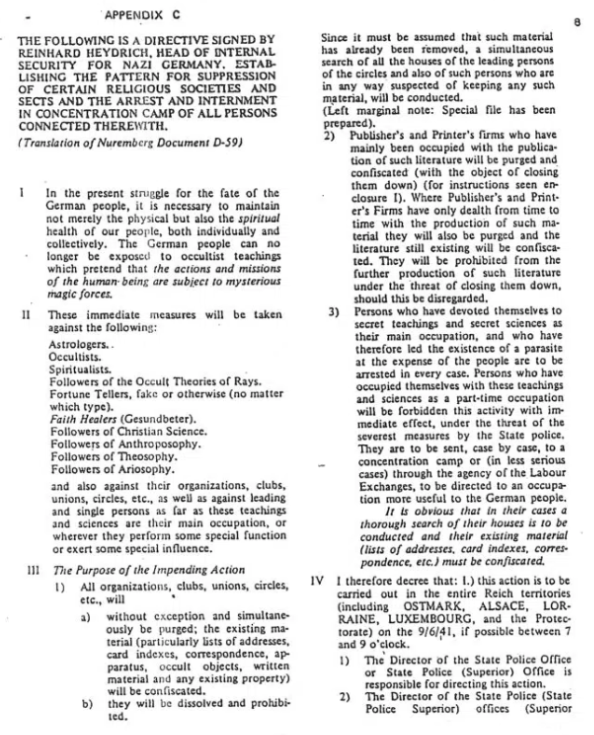
Conclusion
Like the anti-cultists during the era of Nazi Germany, Dvorkin and the intertwined network of anti-cult groups provide authorities with materials about representatives of the so-called sects. Dvorkin’s Center issues slanderous “expert” opinions on the nature of various groups, prompting authorities to investigate them and initiate criminal proceedings.
This defamation of innocent people in Russia, like in the Third Reich, already resulted in brutal persecutions and physical assaults on citizens. The ideas propagated by Dvorkin reflect the same ideology of Nazis, expressed by Haack, Künneth, and Hitler: hatred of dissent, intolerance, refusal of pacifism, and justification for violence. This example of Dvorkin is merely one among many anti-cultists, but it suffices to illustrate their direct connection to Nazism.
What you have read above are the direct proofs that Nazism never disappeared; it has merely transformed, adapting to new external circumstances. However, we see a direct line of transfer of knowledge, experience, and methods of dealing with dissenting groups of people with their complete eradication.
Representatives of global anti-cultism utilize all Nazi practices but have expanded and refined them for their purposes. Thus, the flame of Nazism has grown, and now you see the facts, which prove that, in reality, global anti-cultism is a huge force that has already gained power and seeks to achieve its goal: the complete destruction of democratic values and the establishment of a unified Fourth Reich.


